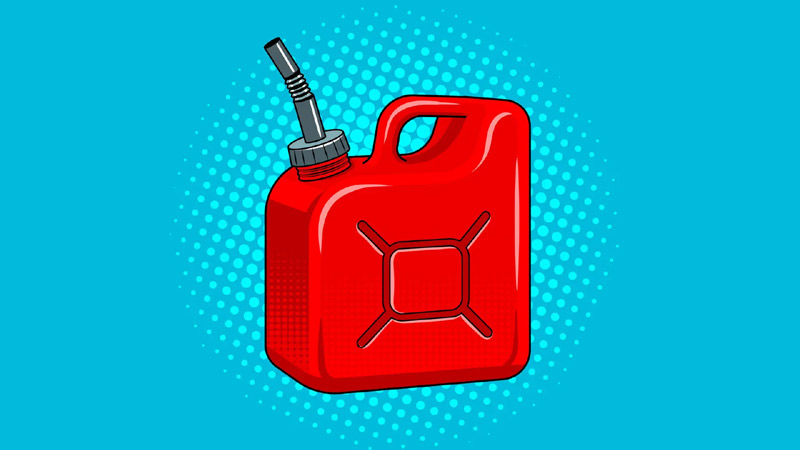![[feature] How To Transport Gasoline Safely](https://blogger.googleusercontent.com/img/b/R29vZ2xl/AVvXsEjlwIWfMpgampUvyvRC0Yx3ZDEGF885BJZFhaU7S_TeibWlyZX5IK3y5_y0YGhwgotRYX43Bvp29z0DTQVbCuoZtrFSnxQaJCY6YjzKOTjlmG9sdQYhwkz4CZsR_vwckcwYKEJH-Hir3-dr7EggWozV6R_l8yH1iPk2zc2MMGMvwX99deWxWz-Ye0L0/s16000-rw/gasoline.jpg) |
| Ⓒ Provided by The Drive |
By Peter Nelson, The Drive
You would think that after some attention-grabbing reports about people transporting gasoline in plastic bags, people would wise up and spend a reasonable amount of currency on containers that are meant for such a task. But, no, people keep hurting themselves (brutally) by pouring gasoline into plastic bags and transporting them inside their vehicles.
For those who don't want to end up impersonating a classic comic book character, or the dude in the Metallica music video, here's how to properly and safely dispense gasoline into an approved container, and then safely transport it to where its intended use lies.
Read More: Advice for Dealing with Unexpected Vehicle Trouble
Please note that it's not a good idea to hoard gasoline, either.
How to Fill at the Station
Safely pouring and transporting gasoline is easy, but this part might be the easiest.First, only use an approved container. For Californians, be sure to buy a container that's CARB-approved. Then, make sure your nearby automobile is turned off, and that there's no sign of an open flame, anywhere. Including a lit cigarette or cigar. This is common sense, but then, people have been photographed storing gasoline in plastic bags, so here we are.
When you're at the station, set the can on the ground and remove its nozzle, creating a clear path for the dispenser's nozzle to be inserted into, thus preventing any spillage. Touch the nozzle to the rim of the can—this dissipates any static electricity that might be hangin' around. Then, start filling it, but only to about 95 percent full—brimming it will increase the chance of spillage, and who wants to do that with our current ridiculously high fossil fuel prices? Also, don't use the dispenser's lock/hold, fill it manually with your own grip.
Screw the can's nozzle back on, make sure it and the can's breather are sealed tight. The breather's the little bit that's usually behind the nozzle, it's there to prevent glugging while pouring gas out. You don't have to swing it around wildly to test this, just make sure they won't potentially spill a bunch of gas if tipped over.
Transportation
This step is also quite easy, though could perhaps be tricky if you're not prepared. Transport gasoline in the trunk, hatch, or bed (if you have a truck), do not transport it in the passenger compartment.Do whatever you can to brace it, too, whether by using any available trunk cargo netting, small tie-downs, pushing the can against the edge of the trunk, and then bracing it in place. Do not brace it near any wiring that might be poking out, or with anything absorbent, and make sure anything else in the trunk won't slide around and damage the can. Companies make special carriers for gas cans, too.
If you have off-road accessories strapped to the side of your off-road rig, or attached to its roof rack, make sure they're tightened down very well. Remember that a full jerry can is considerably heavier than the empty ones you might be carrying around on your truck (you know who you are) and so you're really going to want to see a good, secure attachment.
Then, simply drive to your destination, but with smoothness and ease. Take corners more slowly, brake earlier and smoother, and accelerate slowly and steadily. You don't want shifting contents, er, shifting your contents into the stratosphere in case of an explosion.
When you arrive at your destination, it's a good idea to have a portable fill funnel to put into the car's (or whatever it is you're filling with gas) gas tank so that gasoline will pour down into it with ease. Many gas cans come with them, but it doesn't hurt to keep one in your trunk just in case.
Tips
Only use cans that have the Underwriters Laboratories (UL) logo on them, which shows that they've been certified to carry gasoline, which is a gnarly chemical that quickly eats away at many other plastics … like plastic bags!Read More: What to Do if You Accidentally Put the Wrong Fuel in Your Car
For those who might be transporting gasoline due to traversing over long distances with sparse gas station availability, temporary gasoline alternatives like Magic Tank are an option. But beware of keeping them in a trunk for an extended amount of time. They can become damaged, leak, have a noxious smell, and even expire.
See more at The Drive





















